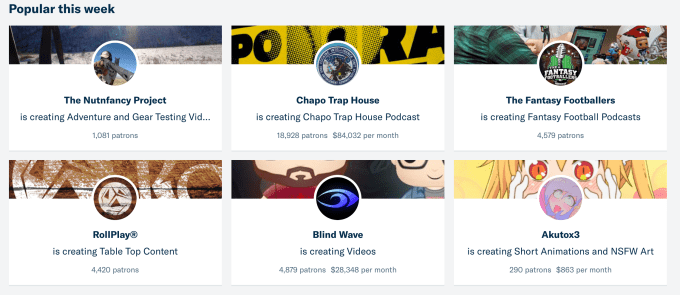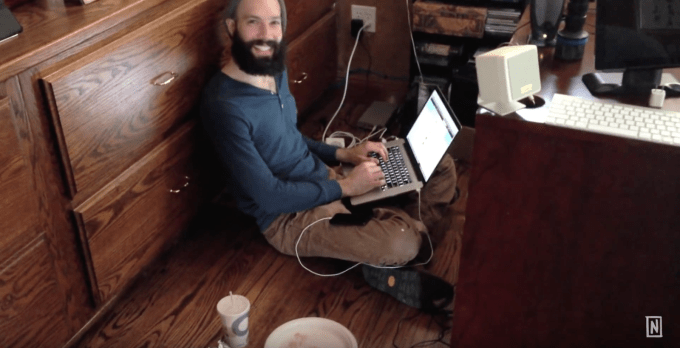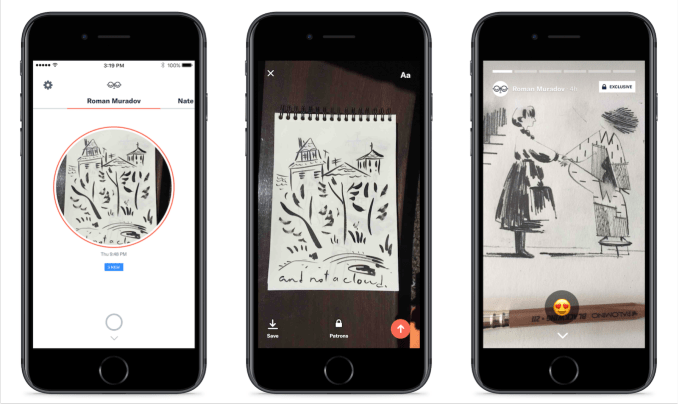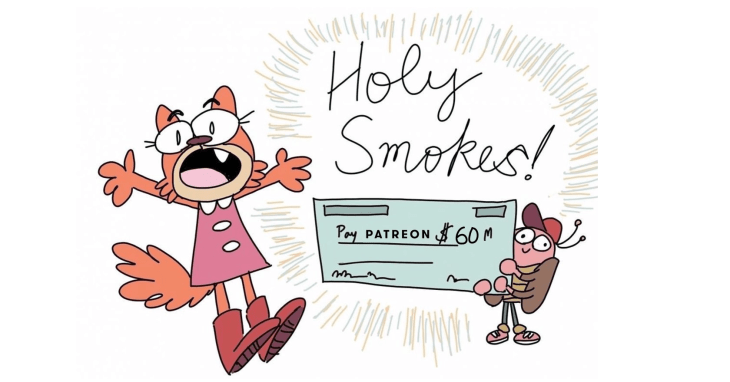Patreon upgrades content creation from a passion to a profession by paying artists 95% of subscription payments from fans instead of 55% of skimpy ad revenue like Facebook and YouTube. Now Patreon itself is getting paid with today’s official announcement of the big Series C funding round TechCrunch broke news of last week.
Patreon has raised $60 million led by Chris Paik at Thrive Capital which also led its Series B. As we reported, Index participated in the round that two sources told us value the startup at around $450 million. The Series C also includes existing investors CRV and Freestyle, plus new back Draper Fisher Jurvetson via partner Barry Schuler. The funding brings Patreon to a total of $107 million raised.
The new capital will go towards hiring to expand its 80 person team and scaling up growth by recruiting more creators including videographers, political pundits, game developers, illustrators, musicians, and comedians. Patreon’s business is doubling in size each year across metrics like creators on-boarded and paying subscribers, and it expects that grow to continue. Patreon already has 50,000 creators and 1 million subscribers on the platform that pay an average of $12 per month.

“Over the last 15 years, distribution has been democratized and pretty much solved” Patreon co-founder Jack Conte told TechCrunch in June. “Unfortunately in that process, global financing for the arts has gotten into jeopardy.” While once only the top musicians or artists could sell their work in stores or on tour, the internet helped niche creators find their audience. But trading sales for ad-supported streaming and social media made it tough for anyone but the most established artists to earn a living wage.
Patreon’s tiny 5% cut of subscription revenue is highly attractive to creators who are used to a much smaller share than 95% (minus credit card processing fees). Both YouTube and Facebook’s new Watch tab of original video content only pay out 55% to creators. Patreon’s needling of YouTube over its weak ad revenue payouts may have hastened YouTube’s launch of “sponsorships” that lets fans pay $4.99 a month for bonus features and access to exclusive live chats with creators.
“5% is a philosophically important mark” says Conte. “When we pitched the Series B, some of [the investors] didn’t get it, and some of them did.” While Patreon might have been able to get away with charging 10% or 15%, the low rake incentivizes creators to funnel fans from other platforms like YouTube, Facebook Instagram, podcasts, and blogs to Patreon where they can more effectively monetize them.

Co-founder Jack Conte launches Patreon after being up for 48 straight hours in 2013 [Correction: Conte wasn’t hungover, just realllly tired.]
Some creators like political commentators Chapo Trap House earn over $80,000 per month via Patreon. Dozens of creators earn over $30,000 per month. Even smaller artists can pull in a few hundred dollars per month, which goes a long way towards them making rent and being able to pursue their creative inspirations instead of taking a part time job. And unlike releasing the occasional album or book, or using project-based crowdfunding platforms like Kickstarter, Patreon provides a reliable paycheck.

But to become a truly successful business and justify its new validation, Patreon will either need to grow much larger, or boost the amount it earns. Right now despite its success, it’s only on track to earn $7.5 millon in revenue off the $150 million to creators this year. Currently all the fundraising tools Patreon offers are included in its 5% fee. That includes its new membership engine and its version of Snapchat that’s only available to a creator’s paying subscribers.
The funding could help Patreon develop new premium tools for creators that they’d pay extra to use. Those could include ecommerce functionality for selling merchandise or event tickets, enhanced analytics and CRM features, or new ways to communicate with fans.
Patreon will have to figure out how to fairly promote different creators without playing favorites or merely amplifying the already-popular artists on its platform. It will also have to draw tough lines about free speech vs decency, allowing off-kilter creativity without permitting hate speech to proliferate.
But as online ad platforms tighten their restrictions over what content is allowed, Patreon has found a way to help artists to earn a living by being themselves. They don’t have to sell out to corporate sponsors. They don’t have to change their style in hopes of going viral. They just have to make art that truly touches the hearts of a few people scattered across the world.
Featured image by Miranda Harmon (follow her on Patreon), remixed by Josh Constine
